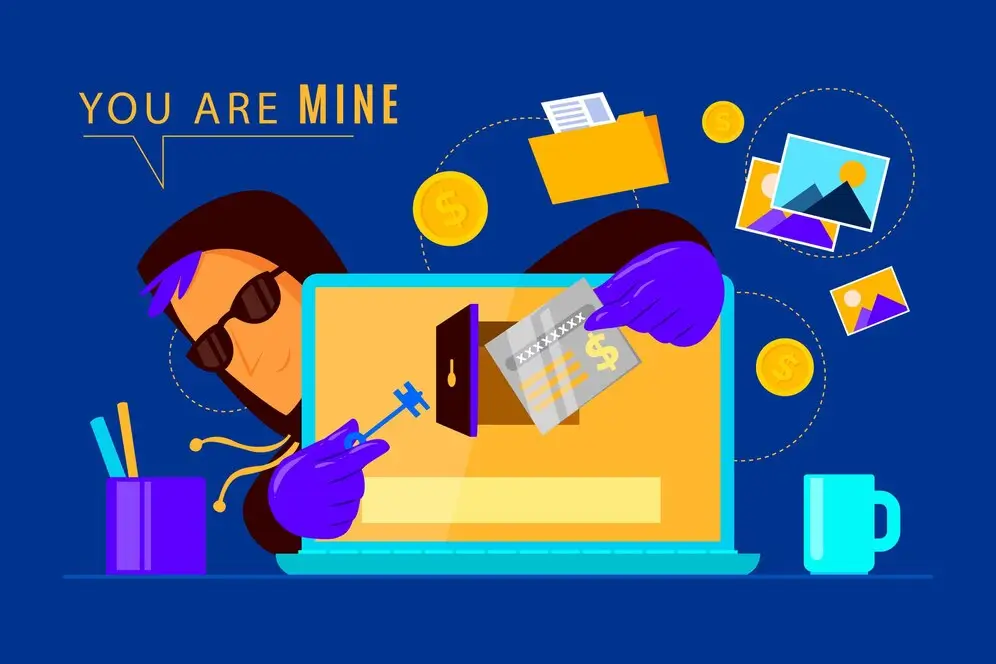What are Phishing and Fake Sites?
Phishing is one of the most common forms of internet fraud, aimed at deceitfully obtaining users' personal data. Often, scammers use fake sites that appear identical to real ones. These sites can resemble bank pages, social networks, or online stores. An unsuspecting user enters their data, which immediately falls into the hands of fraudsters.
How Do Fake Sites Work?
Fake sites are created to obtain confidential information such as logins, passwords, credit card numbers, and other personal information. Scammers may copy the design of a real site and use a similar URL to mislead the user. For example, instead of "bank.com," they might create "bank-security.com." Such sites are often spread through phishing emails that look like official notifications from well-known companies.
Signs of a Fake Site
- Suspicious URL: Check the page address. Fraudsters often use fake domain names that slightly differ from the original.
- Errors in the Text: Pay attention to grammatical errors and strange wording. Official sites carefully monitor their text content.
- Lack of an SSL Certificate: Ensure the site is protected by HTTPS, which can be verified by the lock icon in the address bar.
- Suspicious Requests: If you're asked to enter too much personal information or data usually not required, it's a cause for concern.
How to Protect Against Phishing?
- Check the Site Address: Always pay attention to the URL. Even a small error can indicate a fake site.
- Use Antivirus Programs: Modern antivirus software often comes with phishing protection features that help detect and block fraudulent sites.
- Do Not Click on Suspicious Links: If you receive an email with a doubtful link, do not click on it. Instead, visit the site through a search engine.
- Set Up Two-Factor Authentication: It adds an extra layer of security to your accounts.
- Update Software: Regularly update browsers and operating systems to the latest versions, as they include vulnerability fixes.
Fake Investment Apps
With the growing popularity of investing through mobile apps, scammers have found new opportunities to deceive users. Fake investment apps may look real, but their goal is to steal your money and personal data.
Signs of a Fake Investment App
- Lack of Information About the Developer: If the app developer is unknown or there is no information about the company, it may be a warning sign.
- Low Rating and Negative Reviews: Check user reviews. Often comments can reveal information about fraud.
- Requests for Access to Personal Data: If the app requests access to data unrelated to investments, it may be a sign of fraud.
- Too Good to Be True Offers: If the app promises unrealistically high returns without risk, it's likely a scam.
How to Protect Against Fraudulent Apps?
- Download Apps Only from Official Sources: Use Google Play or the App Store to minimize the risk of downloading a fake app.
- Check Developer Information: Ensure the developer is known and has a good reputation.
- Read Reviews: Always read other users' reviews before installing an app.
- Use Secure Investment Apps: Try to choose only verified and well-known apps with a long history.
How to Recognize a Fake Investment App?
- Study the Interface: Fake apps often have poorly designed interfaces with numerous design errors.
- Check Contact Information: Genuine apps always provide clear contact information, including office address and support phone number.
- Cross-Check Information: Compare the provided data with official sources. Genuine companies always post current information on their websites.
Conclusion
Phishing and fake sites have become a real threat in the modern world, where more people spend time online and use mobile devices to manage finances. Understanding the principles of how fraudsters operate and recognizing signs of fake sites and apps will effectively protect your data. Constant vigilance and the use of modern protection tools will help minimize risks and keep your personal data safe.
